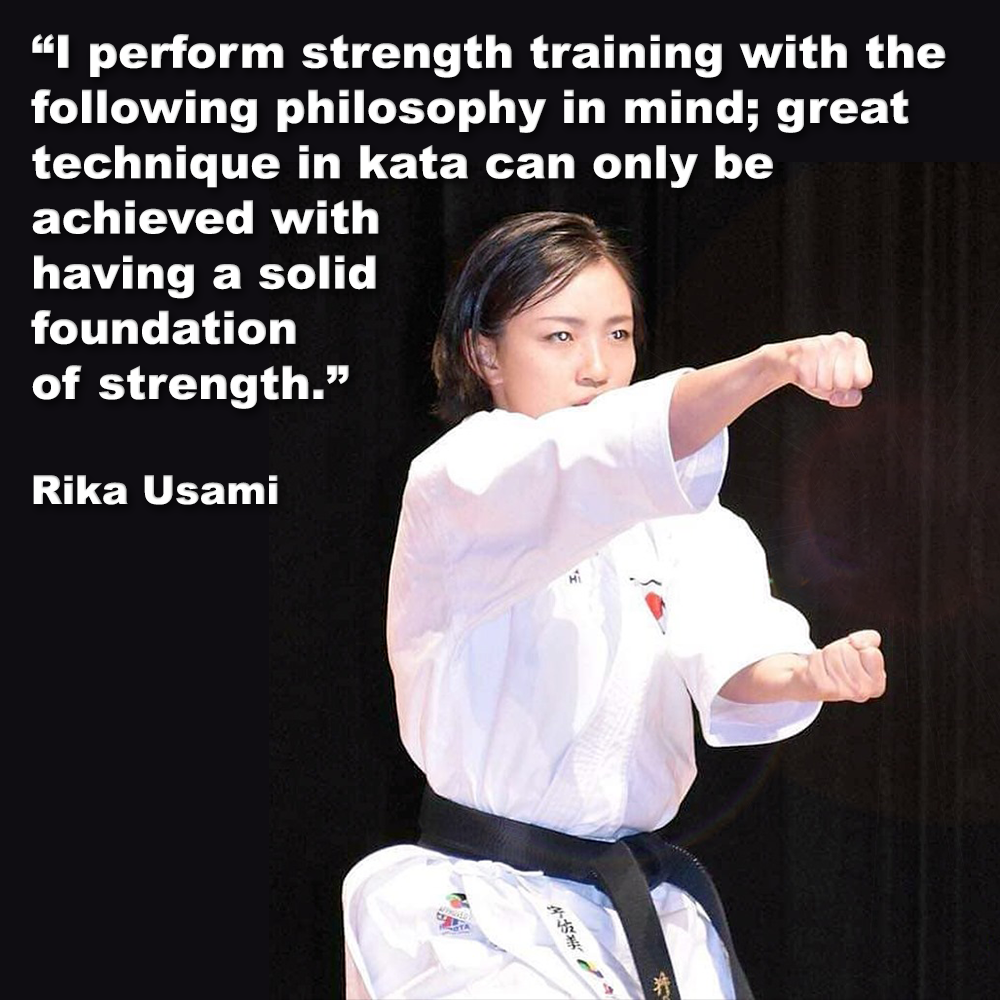
"I perform strength training with the following philosophy in mind; great technique in kata can only be achieved with having a solid foundation of strength." - Rika Usami
Posted by ADAM CARTER on JAN 25, 2024

"I perform strength training with the following philosophy in mind; great technique in kata can only be achieved with having a solid foundation of strength." - Rika Usami
(2 minute and 25 second read)
Many martial arts masters and practitioners believe that you cannot truly understand a martial art form without understanding and respecting the country, culture and history that gave rise to it.
Most people join a dojo to learn how to fight and/or defend themselves. But what few students realize is that soon they could find themselves becoming immersed in martial arts culture and language.
The culture and history of the country of origin plays an integral role in shaping the principles and techniques found in any form of martial art.
To truly understanding the martial art you practice takes time and effort. Like anything in life, you get out what you put in.
One part of karate culture often forgotten today is “Hojo Undo” (補助運動), supplementary exercises, where the use of various implements and aids encourage and develop physical strength, stamina, muscle co-ordination, speed and posture.
There are various implements that are used to aid your all round development. The most common are the; “makiwara” (striking post), “chi-ishi” (strength stone), “nigiri gami” (gripping jar), “tan” (barbell), “Ishi sashi” (stone padlock), “kongoken” (iron ring) and “tetsu geta” (iron clogs). These are by no means all the implements that you can use.
Of course you don’t need to use the implements listed above, there are many modern equivalent found in any gym. And if weight training is one of those exercises that is of interest to you, try using the weights in a way that mimics, or is similar in movement to that found in your martial art.
“Strength training is the starting point for my techniques, and it’s actually very important for this reason. You must do it. For any technique to be properly stabilized, basic physical strength is essential. Therefore, I perform strength training with the following philosophy in mind; great technique in kata can only be achieved with having a solid foundation of strength. That’s my opinion.” – Rika Usami – World Kata Champion & Karate Ambassador.
Goals are individual, not universal. Just because someone can run further than you, or lift heavier weights than you, or perform a kata better than you, doesn’t mean your effort isn’t valid. So work hard for you and your own goals. Progress comes to those that continually practice.
Practitioners need to develop in many areas beyond just technique. The need for strength and power, endurance, flexibility, speed, balance, core dynamics, structural stability, sensitivity, mobility, etc. is just as important as key karate skills.
If you do add weight training exercises to your practices, remember that its not how much weight you can lift, but how you lift it. Often younger karate-ka get caught up in the “how much can I lift” mindset which can lead to injuries.
You want to train smart and combine your conditioning with your other forms of training. Any form of strength training is extremely important in so many ways! Especially as you age.
Are any of the Hojo Undo exercises and tools incorporated in your training?
“Although your goal may often look hard to achieve at first, if you continually make efforts toward your goal, then your time, energy and commitment will never have been wasted.” – Rika Usami
![]() Photo Credit: With thanks to Rika Usami – quote from interview with Jesse Enkamp
Photo Credit: With thanks to Rika Usami – quote from interview with Jesse Enkamp
